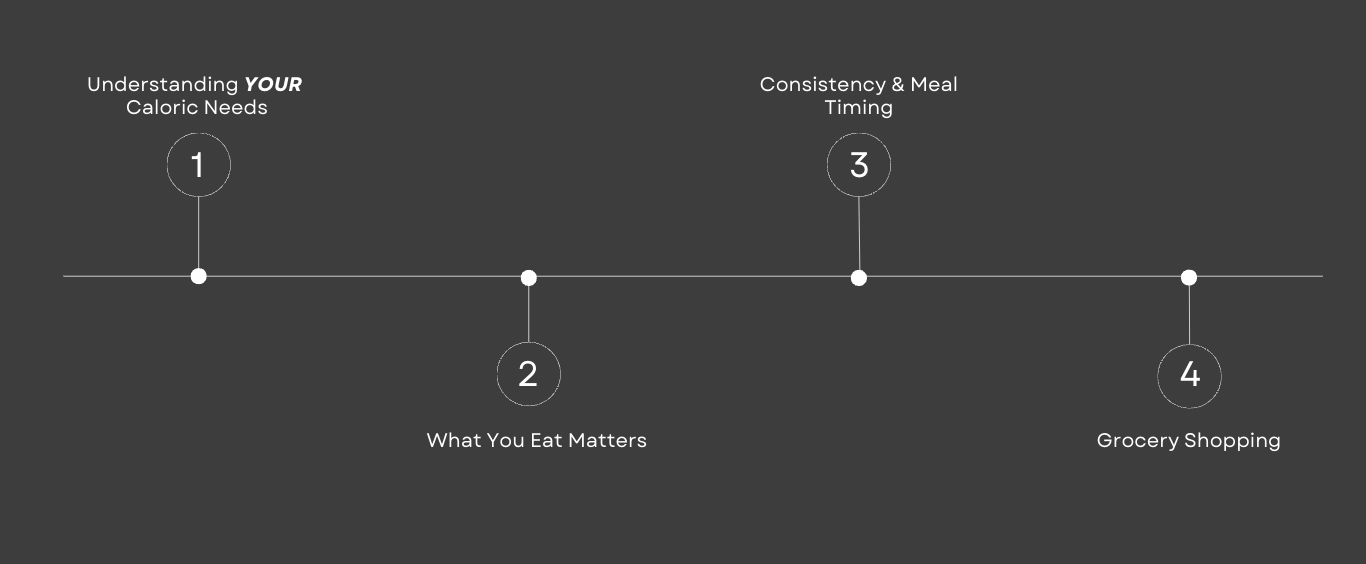A Guide to Navigate Clean Eating
There are hundreds of diets out there all promising the same results - better health, weight loss, cleaner skin, the list goes on. And there is a common theme among the top diets recommended. They all focus on crowding out processed foods, sugars, non-organic products, and conventional meat, eggs, and dairy. they all focus on eating clean.
Clean eating is all about focusing on whole, unprocessed foods. The main idea behind clean eating is balancing and sticking to a diet filled with fresh, unprocessed foods like fruits, veggies, whole grains, and healthy fats. For some people, it also includes eggs, meats, fish, and dairy.
Eating cleaner is a principle that everyone can employ in some sense. How you define it personally is up to you as a bio-individual. In my opinion, this is the easiest way to think about how to eat. It’s not about specific rules of a diet but instead figuring out how food makes you feel your best.
So why bother with clean eating? Well, it can help you manage your blood sugar better, give you clearer skin, help with weight loss, boost your energy levels, and make your hair and nails stronger. Plus, it can improve your mental health and help you sleep better.
It's not just about following a diet; clean eating is more of a lifestyle choice for sustainability.
Follow what feels right for your body.
There isn’t a perfect path to eating or a perfect diet. If there was, everyone would be doing it!
You have to build a plan that is specific to you. You have to stop doing your diet like everyone else around you. because the truth is there is only your diet. Personalizing your food choices is not just about taste; it's about nourishing your unique body.
How to Navigate Clean Eating
4 STEPS TO FEELING YOUR BEST WITH FOOD
The Breakdown
-
I'm not promoting calorie counting, but it's essential to be aware of how much your body needs to function properly. If your goal is to change your body composition, increase energy, or lose weight, you need to eat in a way that boosts your metabolism, which means avoiding restrictive diets and not undereating. Many of us tend to undereat, which can be a significant stressor on the body, slowing everything down and leading to issues like feeling cold, period problems, low sex drive, insomnia, constipation, hair loss, and a lack of interest in food or constant hunger.
To determine your caloric needs, you should start with a baseline estimate based on your activity level and basal metabolic rate (BMR). This calculation is a general guideline and can't account for daily variations in exercise, stress, or other factors. Importantly, you should never eat below your BMR, even when trying to lose weight, as this can be more harmful than beneficial.
When you're eating enough of the right foods, you'll look forward to being active, maintain stable blood sugar levels, and feel satisfied, full, and energized.
-
We are a society so in our heads about what we “should” or “should not” be eating we have lost touch with what our bodies need to thrive. Factors such as family, culture, social environment, emotions, mental health, and media influence our eating behaviors.
The food we put into our bodies provides the raw materials for our blood cells, tissues, bones, and brains.
Focus on incorporating quality protein, fiber from vegetables, healthy fats, and carbs (starchy vegetables and whole fruit) and crowd out the food that doesn’t energize you.
-
Creating consistency in a busy, fast-paced life is highly personalized but crucial for overall well-being. Our bodies thrive on regularity, which signals safety to our brains, allowing them to focus on functions like metabolism and hormones.
4 Tips to Establish Consistency
Start by establishing regular meal times—breakfast, lunch, and dinner—and try to eat every 4-5 hours while minimizing constant snacking, as frequent nibbling can disrupt natural hunger signals and lead to overeating.
Cooking at home is invaluable; it helps you eat more nutrient-dense foods and less processed junk, reducing the risk of obesity and type 2 diabetes. If cooking isn’t your favorite activity, practice is key—over time, you’ll improve and find what you enjoy.
Meal planning and prepping are essential for staying on track; keep accessible ingredients like frozen or pre-cut veggies, and batch cook staples like quinoa or proteins. Create a meal rotation list to maintain variety and ease.
Balance is vital—don’t completely banish favorite foods; instead, integrate them throughout the week to avoid extreme dietary shifts between weekdays and weekends. This approach ensures lasting nutrition results without feeling the need to detox or cheat.
-
You might find it hard to get rid of harmful ingredients or switch your products. Trust me I've been there. Many of us have grown up with these “comfort” foods and food brands we thought were good for us, and it can be hard to let those favorites go.
Below are the most important items to avoid to help you make smarter choices in the store.
WHAT TO AVOID
GMOs, Artificial Ingredients, Colors, Additives, Refined sugars, artificial sweeteners, excitotoxins, inflammatory oils, folic acid or enriched flour, the dirty dozen produce, and meat and dairy treated with hormones and antibiotics.
Crowd the items below by incorporating,
Organic produce when possible, natural sweeteners, non-GMO produce, healthy fats and oils, safe food additives, and organic, grass-fed meats, dairy, and eggs.
Book A Free Call
There is so much we can do to eat cleaner. If you’re feeling overwhelmed you’re not alone. Through guidance on clean eating, exercise type & consistency, sleep quality, and stress management—the top predictors of health—I help you discover what is working and not working for yourself, crafting core principles to guide YOUR journey.


